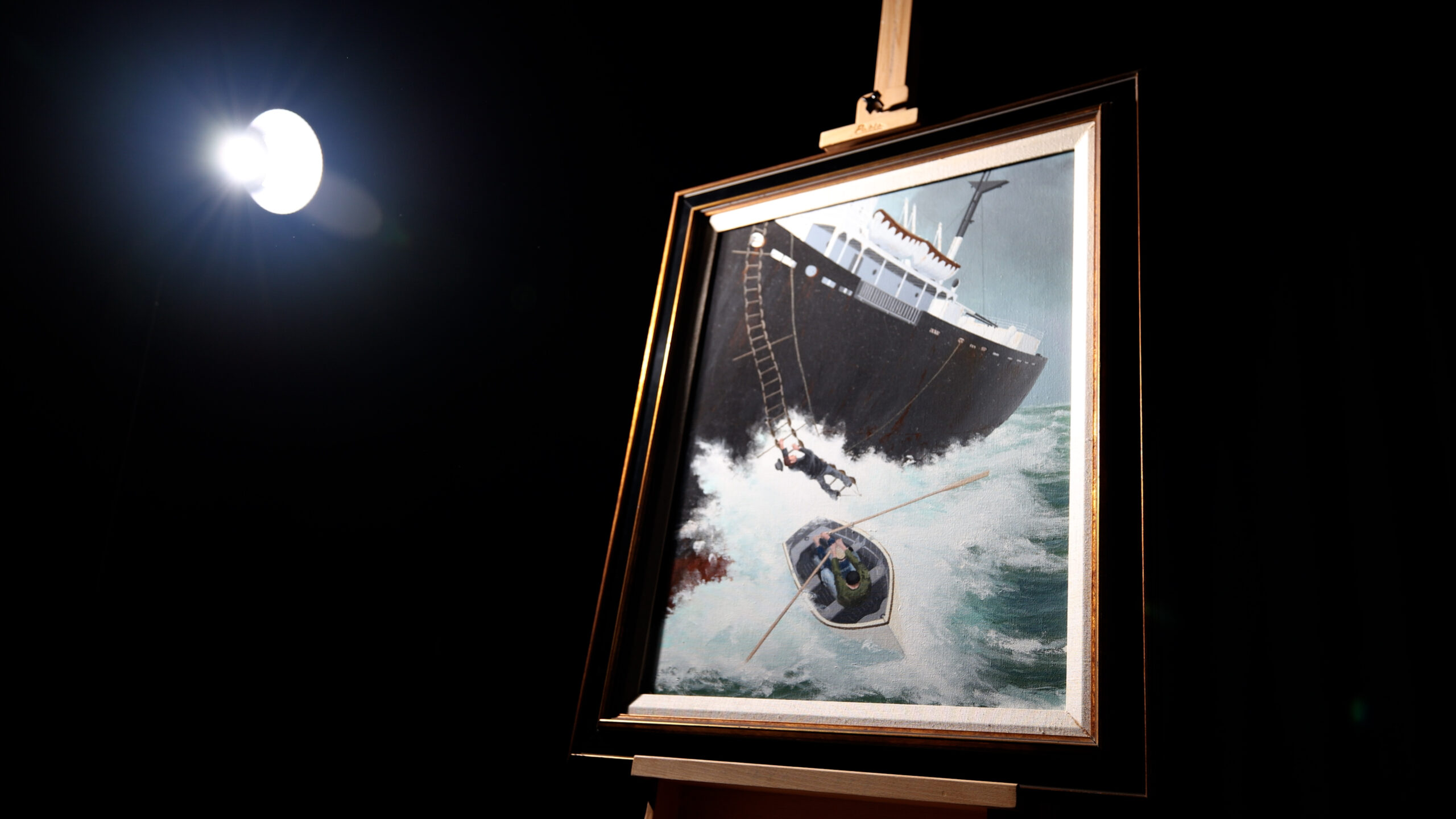
With a roar and a crash, a wave explodes against the side of the ship. It tosses the small wooden pilot’s yawl backwards with such force that it seems it might break through the canvas. The pilot, who has only just made it to the ladder, barely hangs on with his left hand, his right hand grappling for a rung as his hat goes flying off. There’s an animated quality to this scene, called dynamism, that brings this dangerous moment to life on the canvas. But for the small group of pilots who help ships safely navigate the world’s coastal waterways, this isn’t just a painting – this is reality.
A Pilot’s Passion
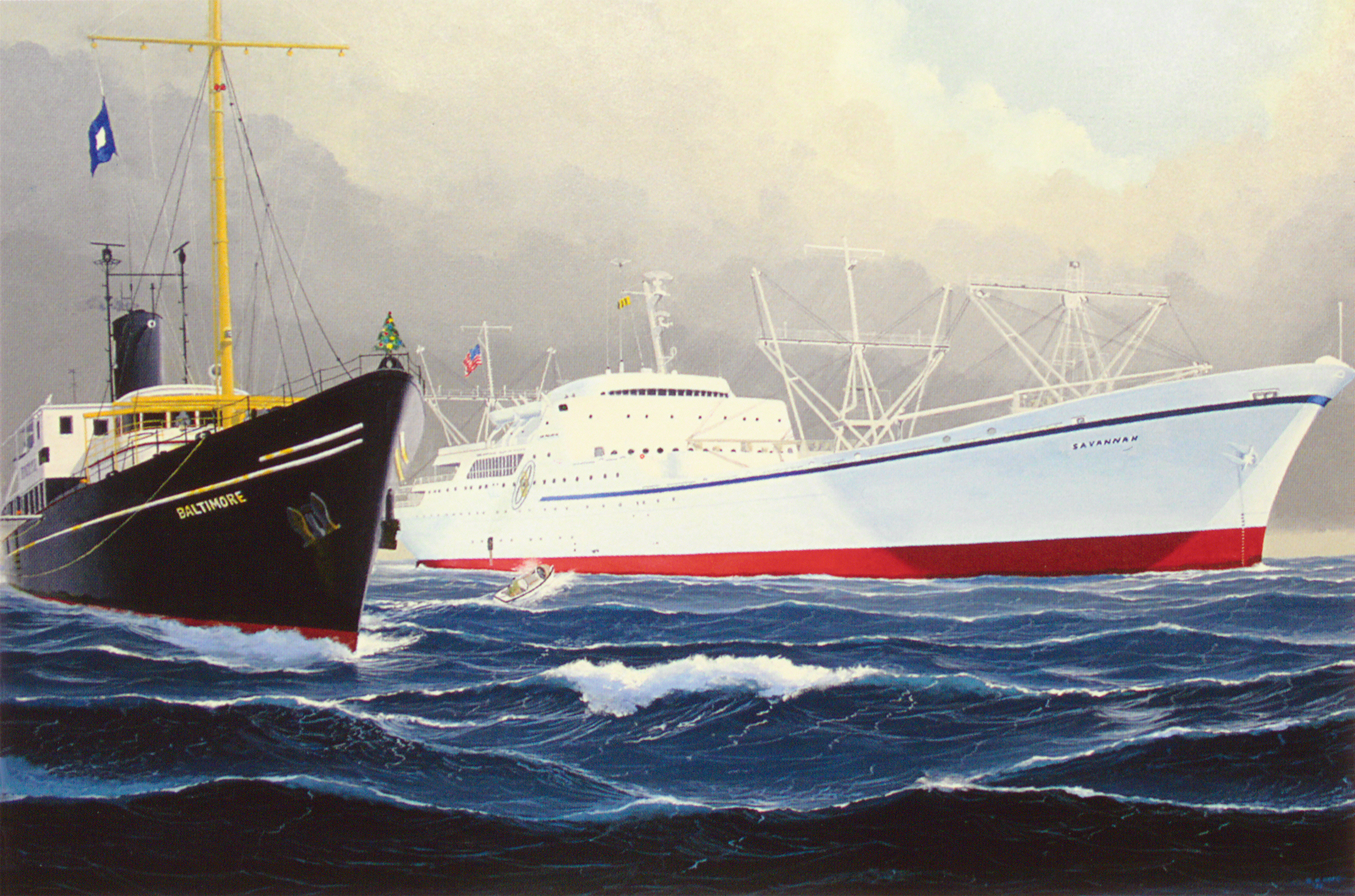
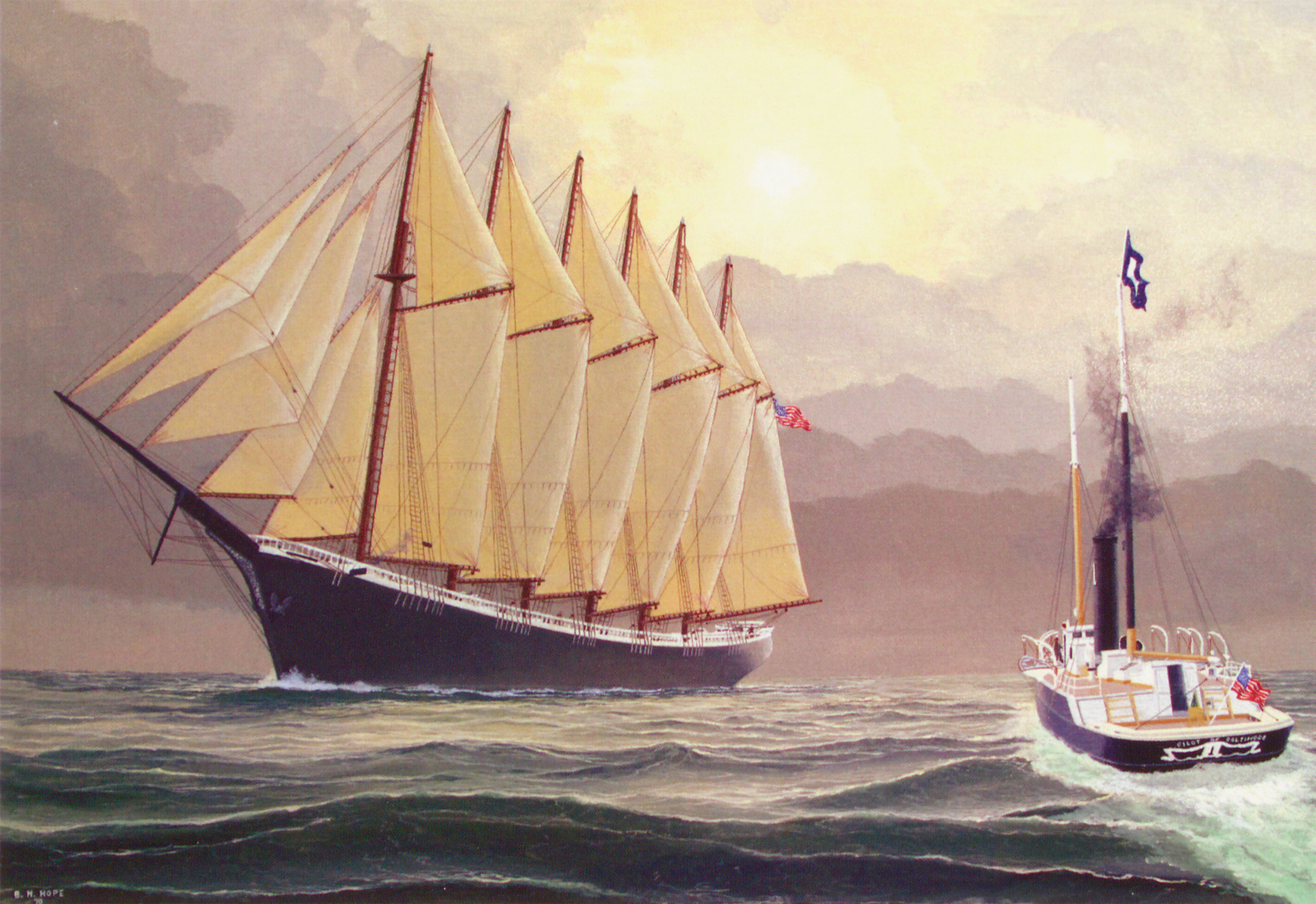
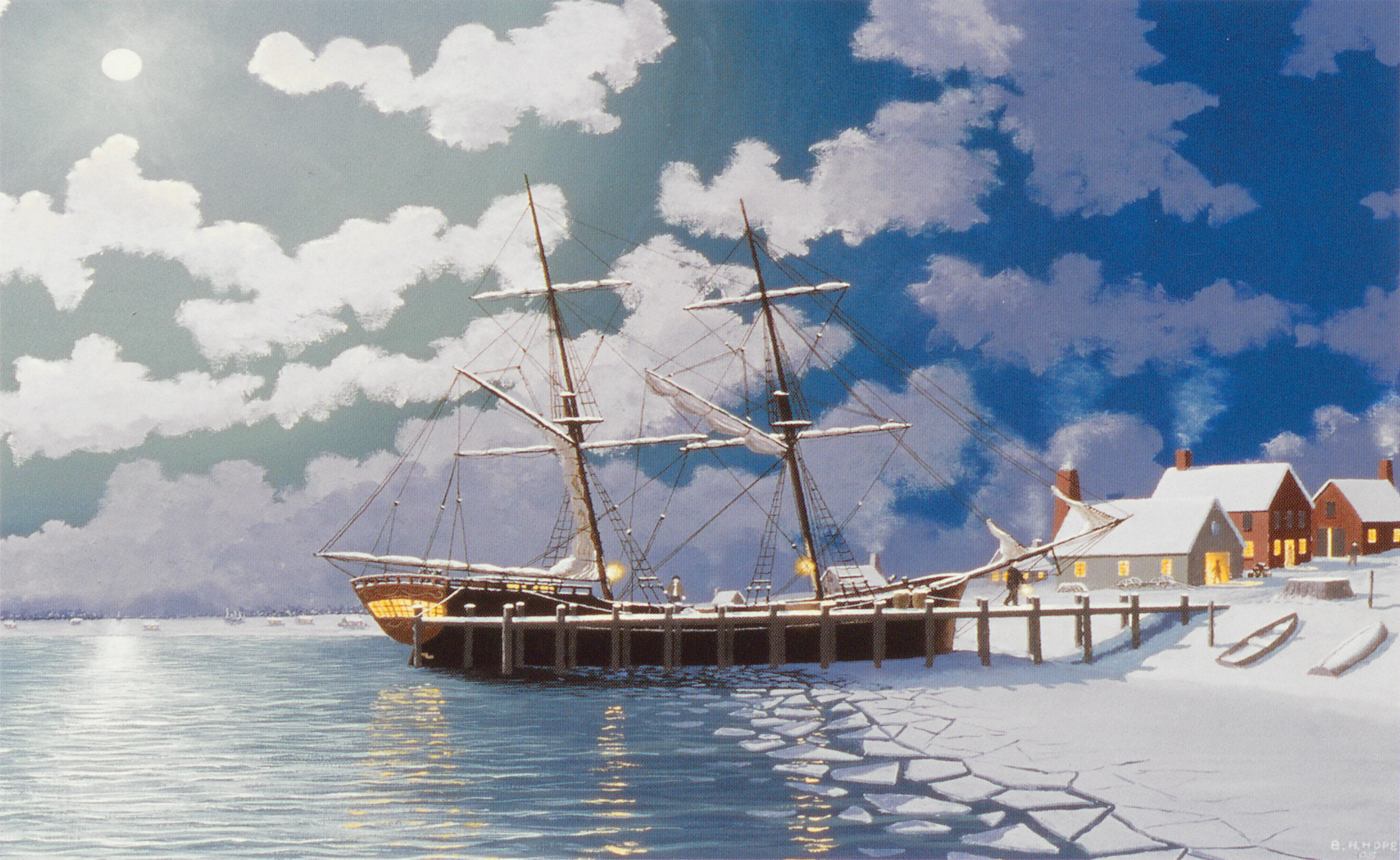
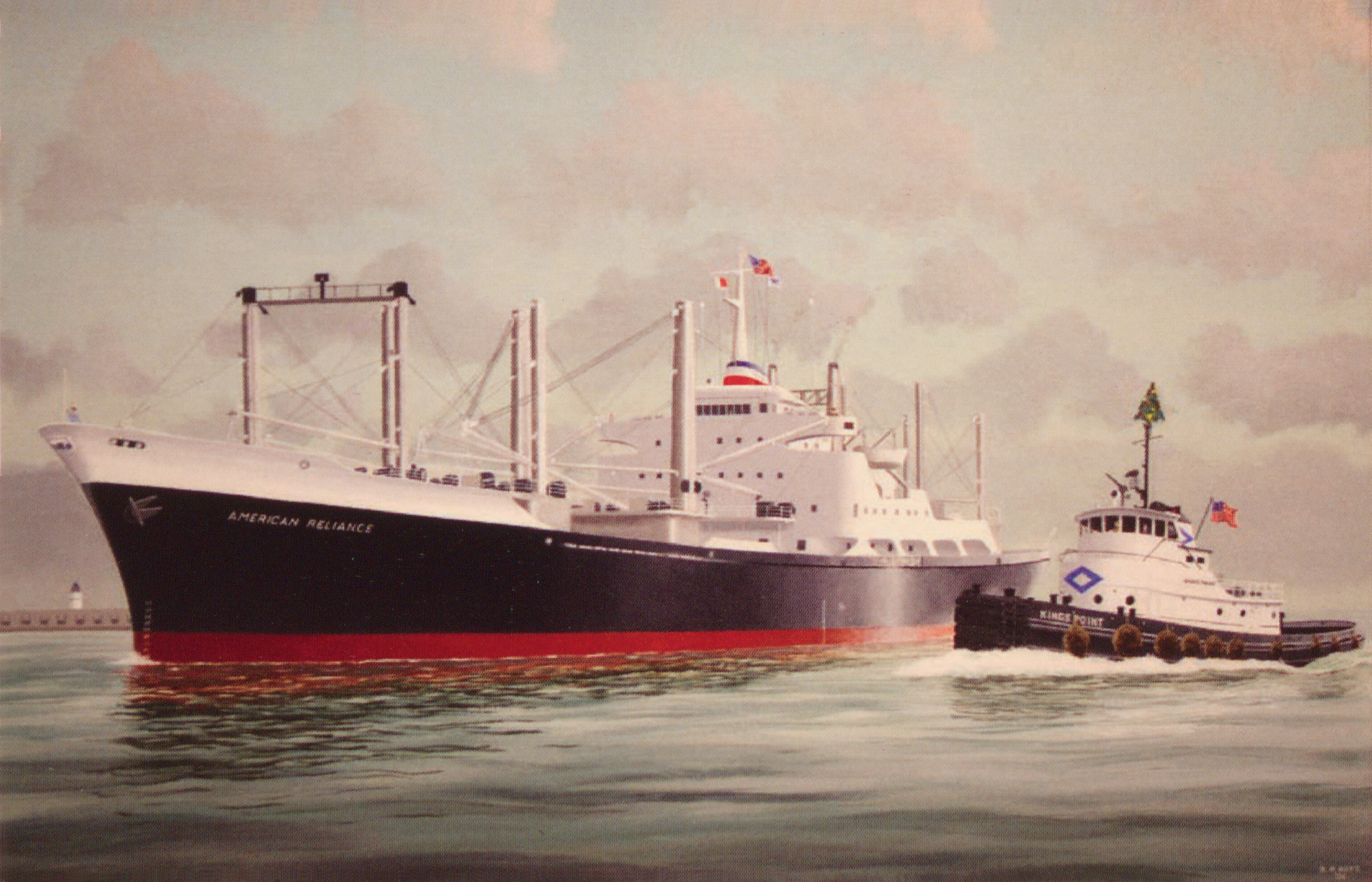
For Brian Hope, painting the reality of pilots, especially Maryland Pilots, is far more than just a pastime or a hobby, it’s a passion rooted in his own 43 years of experience as a Maryland pilot. And beyond that, Captain Hope has made it a personal mission to capture as much of the history of the Association of Maryland Pilots as possible.
He’s done this through extensive research, writing a book on the history of the Association, painting hundreds of works on modern and historical pilot vessels and experiences, and even capturing dozens of oral histories from pilots and their families through the years. And from his plethora of works comes this fascinating piece.
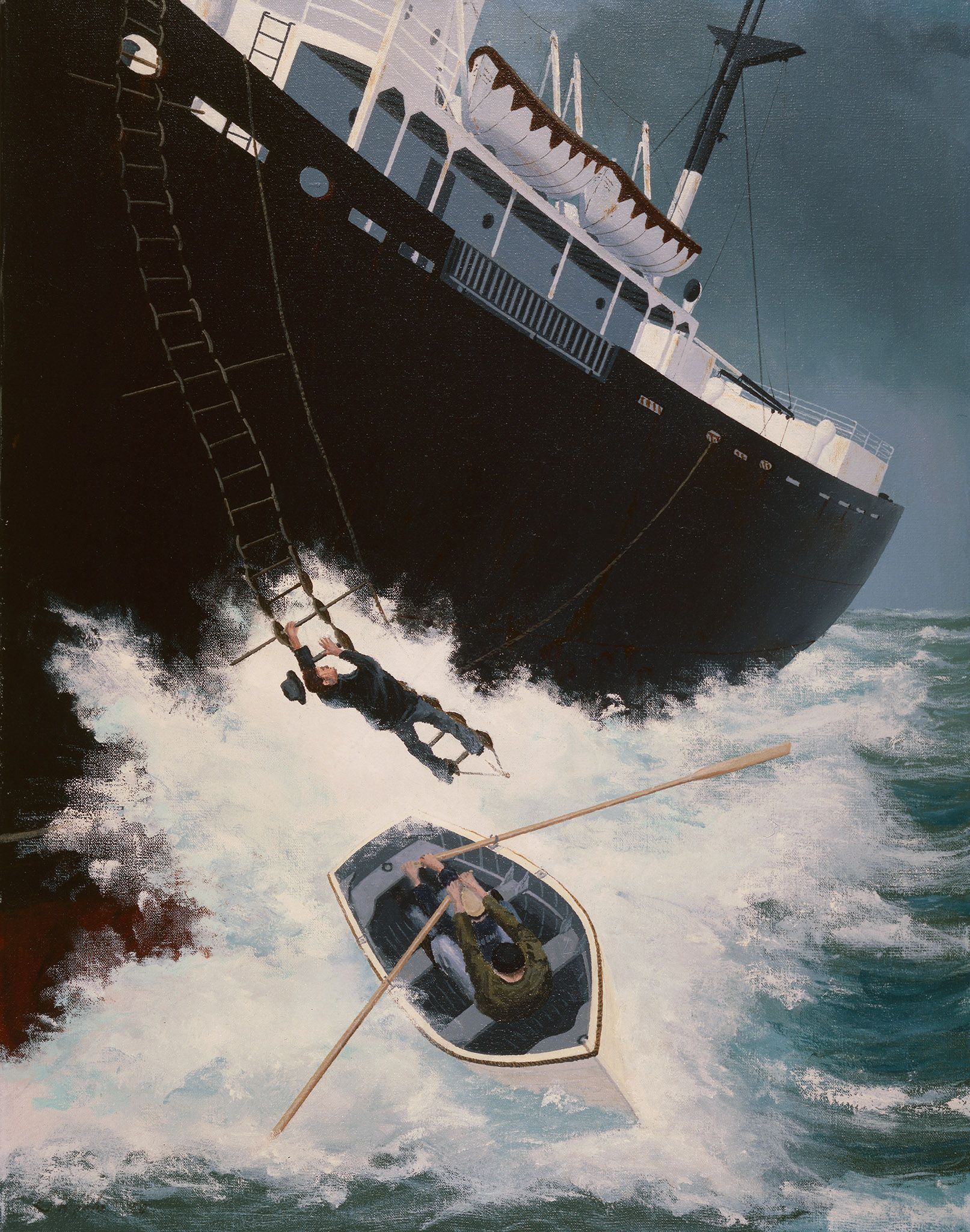
But what is a pilot?
Most people are familiar with aircraft pilots, but yes, ships have pilots, too! Ship pilots are highly skilled maritime professionals who are experts in navigating their regional waterways upon which runs maritime travel and commerce like cruises and cargo ships. They go through a multi-year apprenticeship and certification program during which they learn the ins and outs of safely navigating the waters so that, when they are fully certified, they can board a ship in need of a pilot, take control of the vessel, and lead it safely to its destination or back to the ocean so it can begin its return voyage.
A Deep Maritime Connection
I had the wonderful opportunity to speak with Captain Hope about this work and hear, first-hand, about his experience through his decades as a pilot. As we spoke, it became immediately apparent that his connection to the water runs deeper than most.
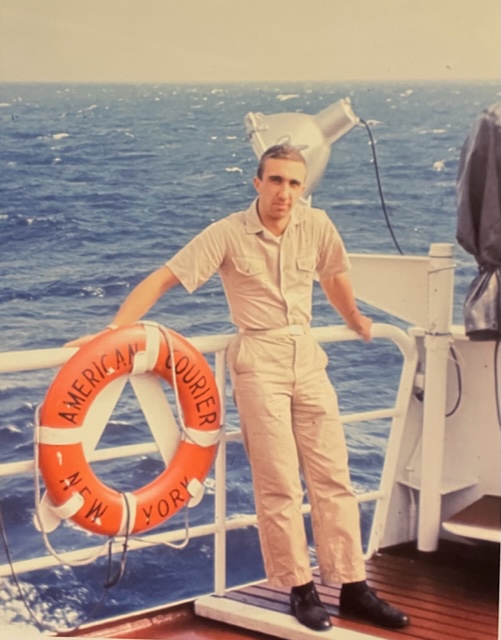
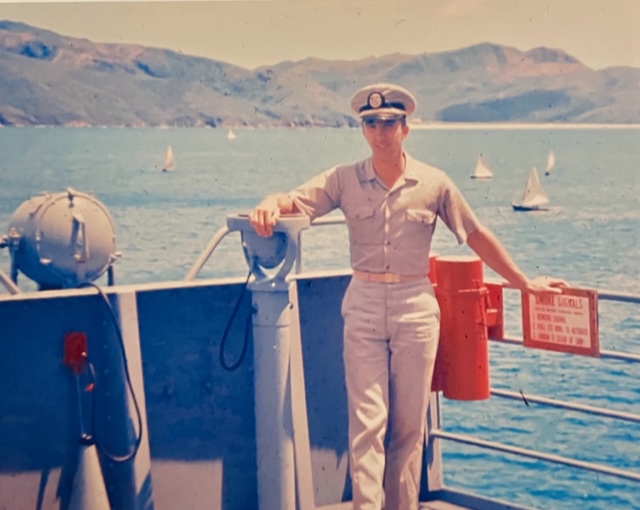
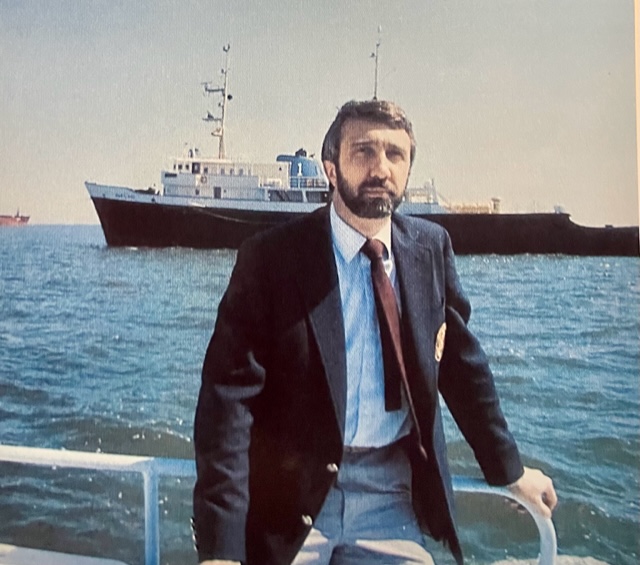
Hope graduated from the Merchant Marine Academy in 1965 and immediately began running ships to Vietnam and back. But when he married in 1968, he knew that he needed a maritime position that wouldn’t keep him at sea for long periods of time. When he saw that the Maryland Pilots were looking for maritime graduates to become apprentices, he jumped at the opportunity. During our call, he recounted amazing stories from his time as a pilot that spoke to his identity as a mariner. Captain Hope kept track of the ships he piloted, and was even able to recall many of them by name for me in those stories he told, but by the time he retired in 2013, he estimates he piloted around 3,700 ships through the Chesapeake Bay.
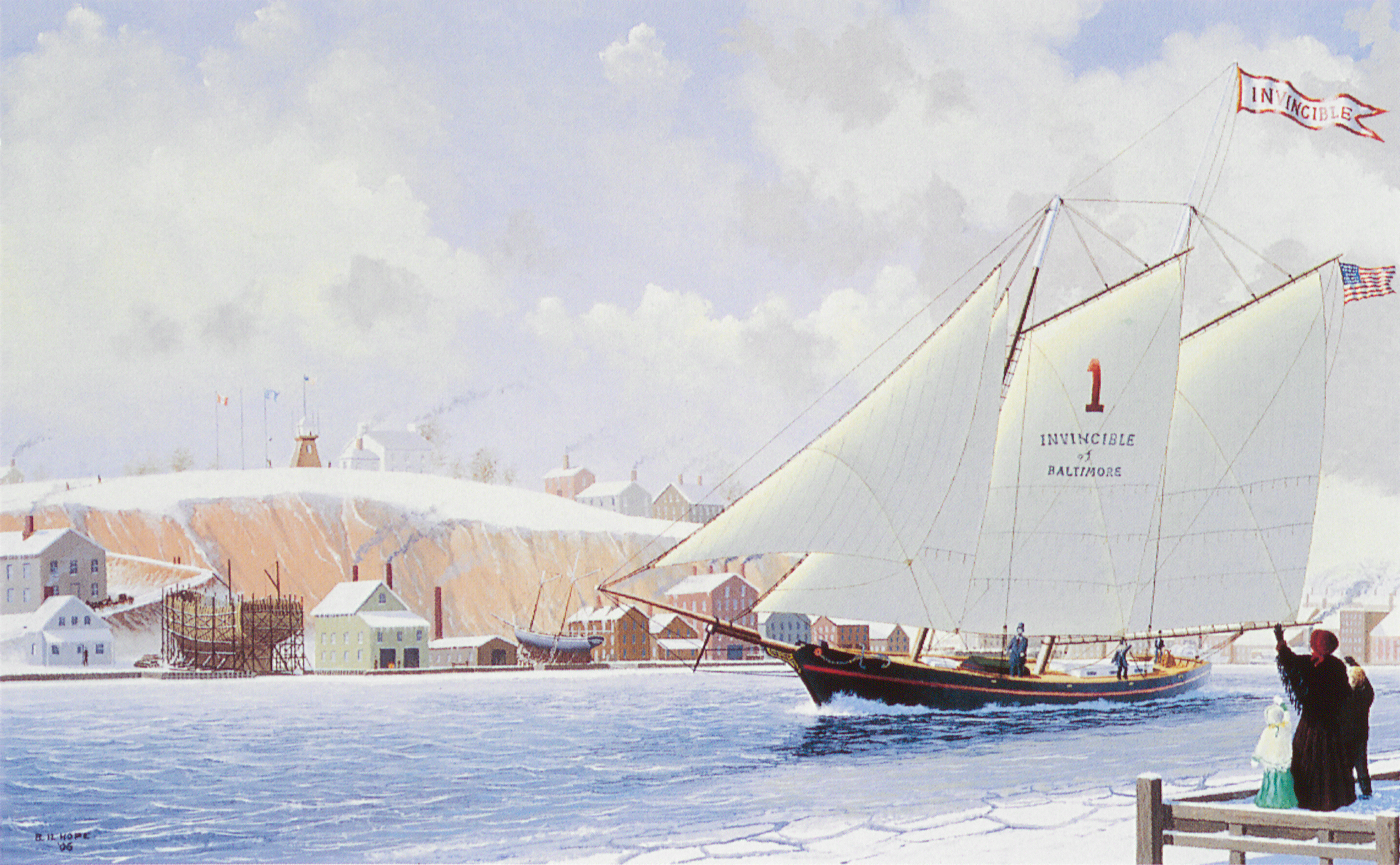
His passion as a pilot led him to want to learn more about the history and so he searched for historic images and paintings of pilot vessels, but noted that he was able to find very few, especially with regards to the early pilot schooners. But one of the works he did find was an image, originally done by an American artist named T. Dart Walker around 1905, titled “A perilous moment in a pilot’s career—climbing aboard a vessel entering New York Harbor in a rough sea.”
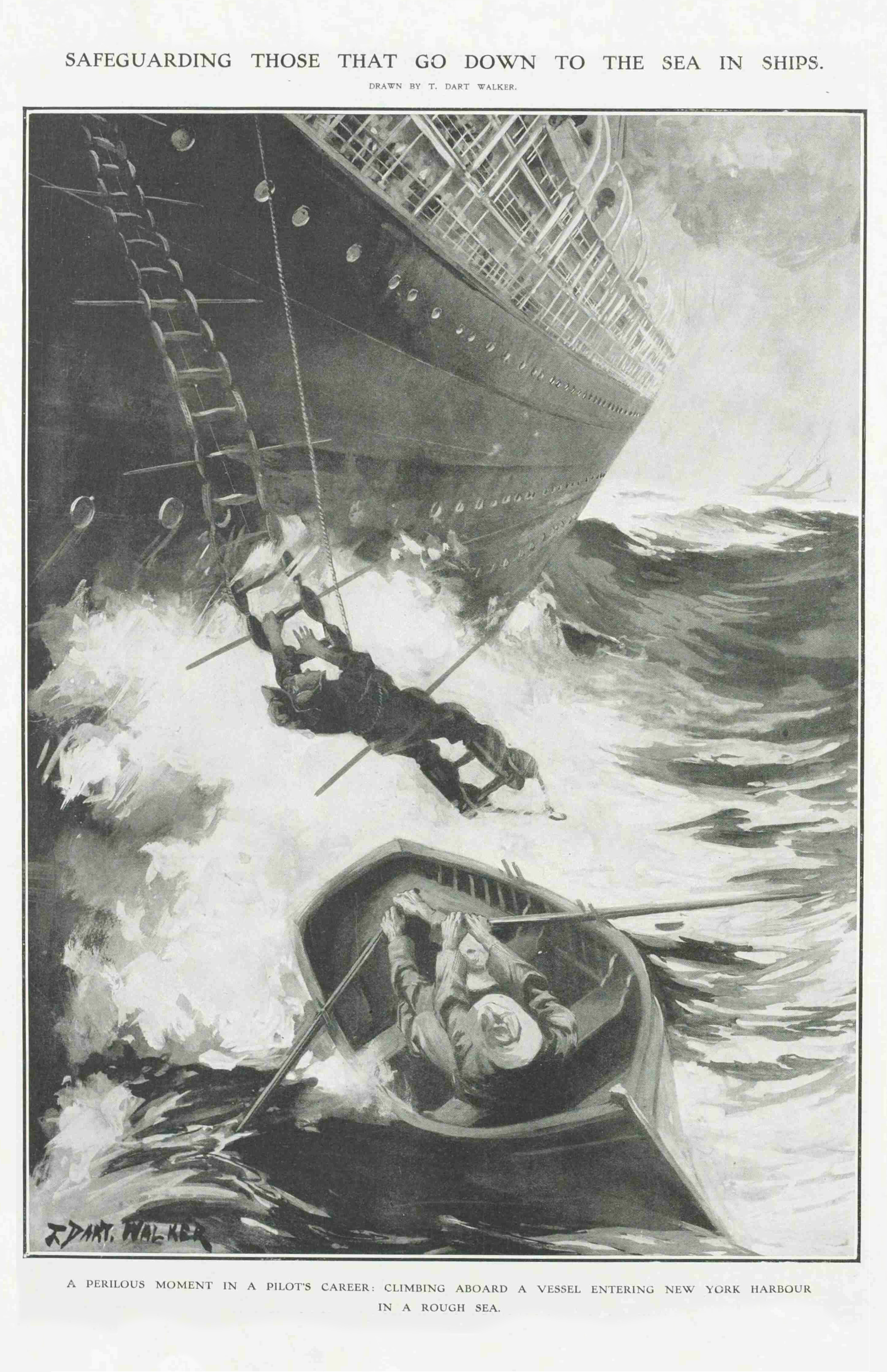
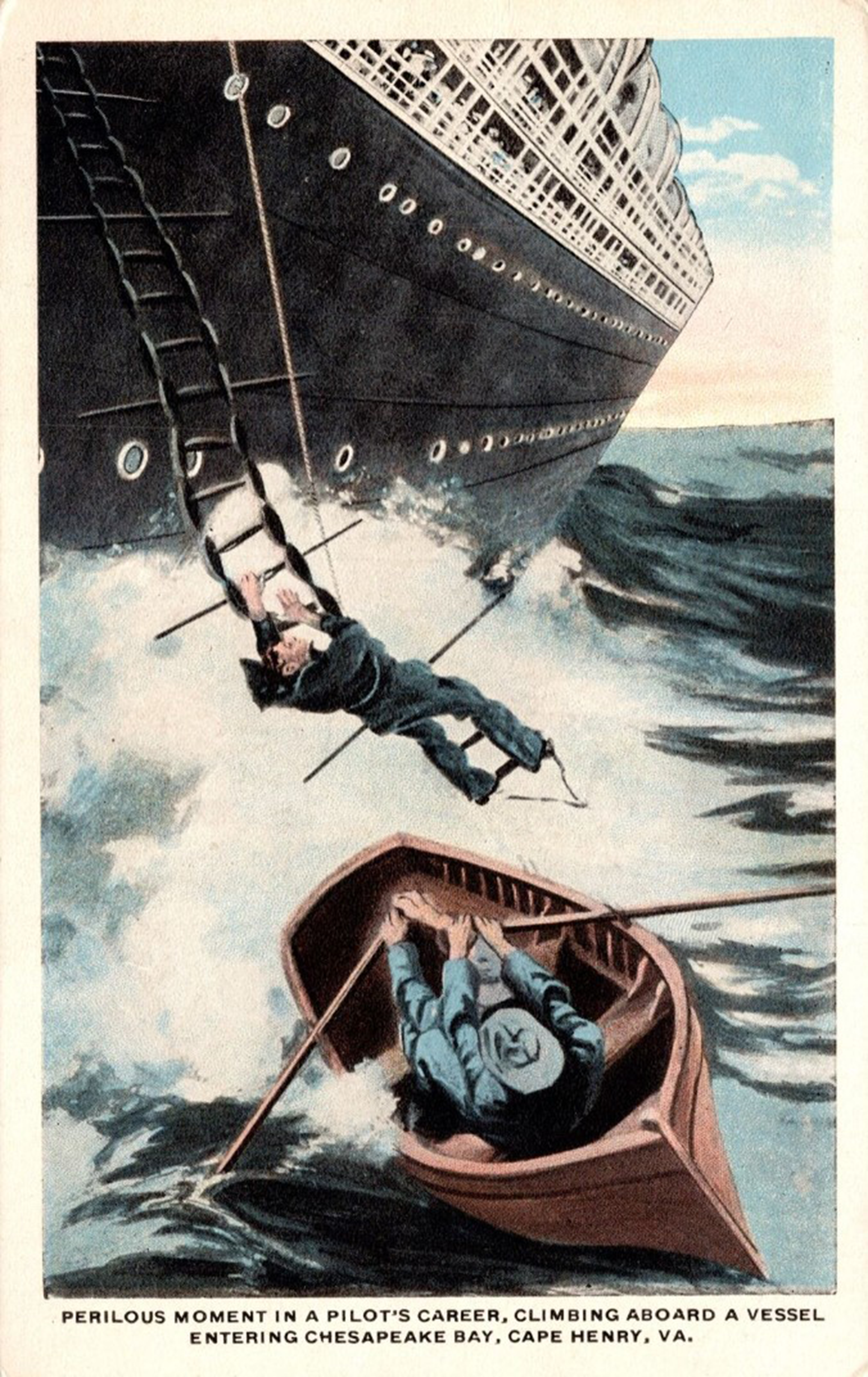
In 1909, the image was reprinted on postcards in Baltimore, MD, but the title of the work was changed to “Perilous Moment in a Pilot’s Career, Climbing Aboard a vessel entering Chesapeake Bay, Cape Henry, Virginia.” Captain Hope regularly worked from photographs or images of ships because, as he jokingly noted, “I have a hard time getting the ships to stop and pose.”
A Dangerous Situation
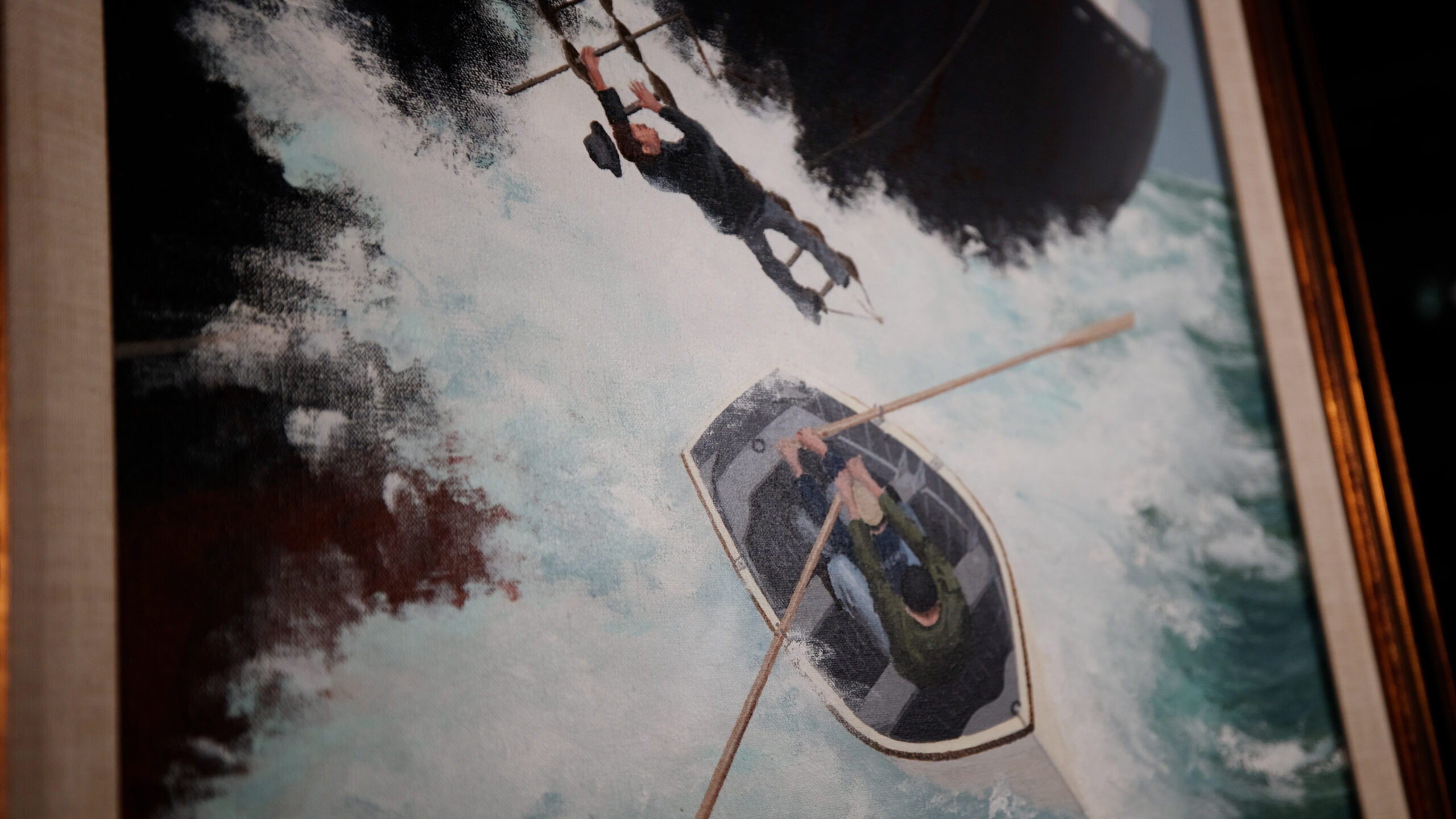
All humor aside, though, he explained that boarding a ship is the most dangerous aspect of a pilot’s job – there’s so much that can go wrong. And in this moment that he replicated in his work, things have gone wrong. The captain of the ship has failed to turn it enough to keep the pilot and the transfer boat safe from waves like this and as a result, they are faced with a life threatening situation.
Hope updated this scene from the original to show a more contemporary version of this pilot experience, this time featuring a World War II merchant vessel called a Liberty Ship. When Hope showed the work to some of his fellow pilots, a few remarked they felt the scene was exaggerated, but an older pilot approached him to say, “That exact experience happened to me in 1947!”
Our World – Connected Through the Waters
Whether they have experienced this exact situation or not, Chesapeake Bay pilots know how temperamental the waters of the Bay can be, but when duty calls, the pilots answer. Though much has changed between the original 1905 piece, this 1980 work, and today – a pilot’s purpose is no less diminished and the job no less important. Our world runs on maritime commerce and it’s the pilots, all over the world, that keep it running. They get called, sometimes in the dead of night, and they spring to action, get to the station, transfer to the ship, climb aboard, take control of the vessel, and begin their run. A Maryland pilot begins their 150-mile journey at Lynnhaven Inlet, just a few miles south of us in Newport News at the mouth of the Chesapeake Bay. Depending on the size and speed of the ship as well as the weather conditions, the trip takes an average of 10 hours, normally at night, to get up to Baltimore. Just a few hours after completing the trip, the pilot will typically board another ship for the journey back down.
The Legacy of Pilots
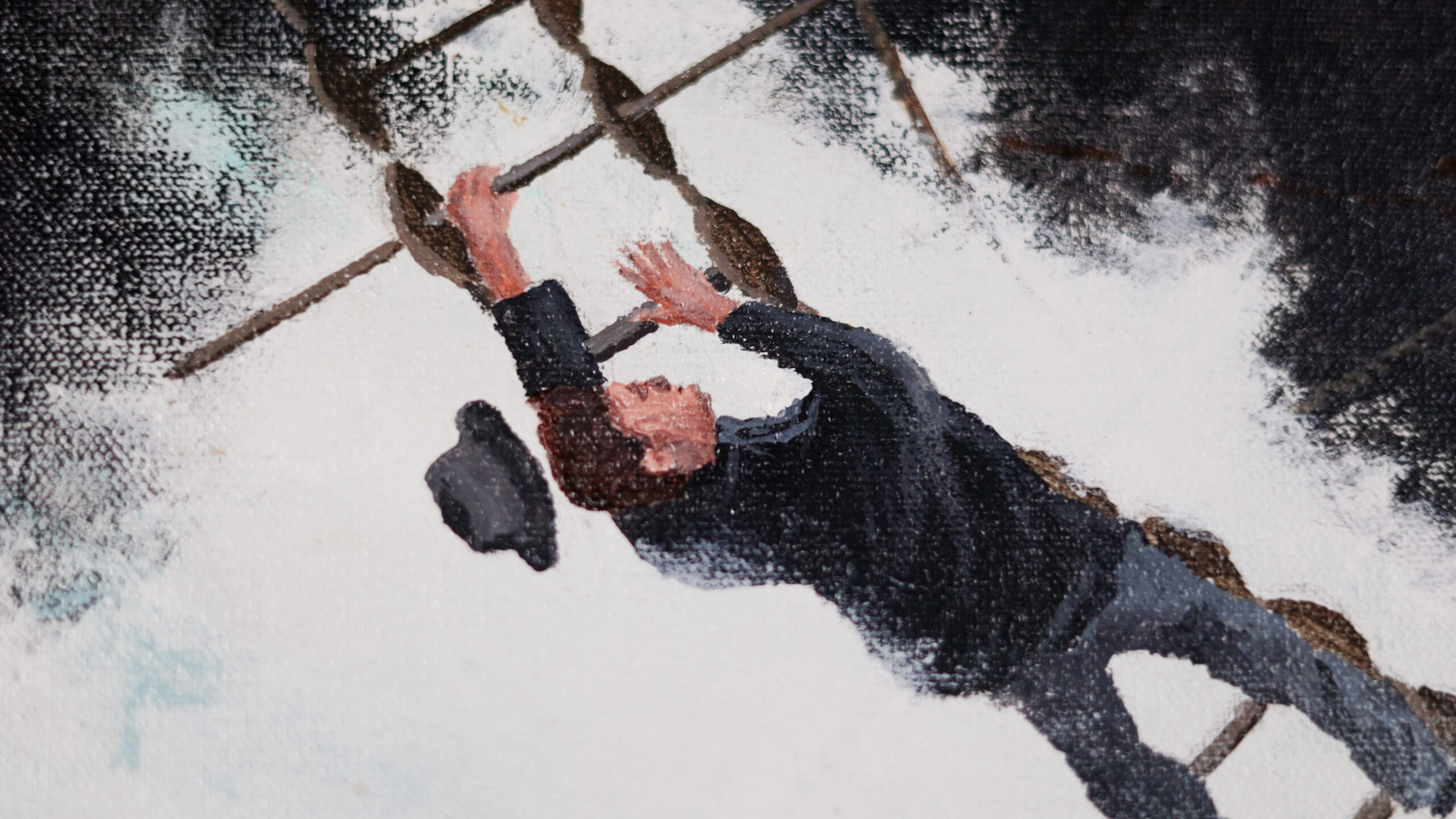
In the dynamism of this work, Hope has shared the exhilaration that he likely felt as a pilot in trying situations. His treatment of color and motion in the waves is not just a copy from the original print, it portrays his skill as an artist, as a mariner. One who knows and has felt first-hand the qualities and power of the Bay in rough weather as shown through his ominous coloration in the clouds.
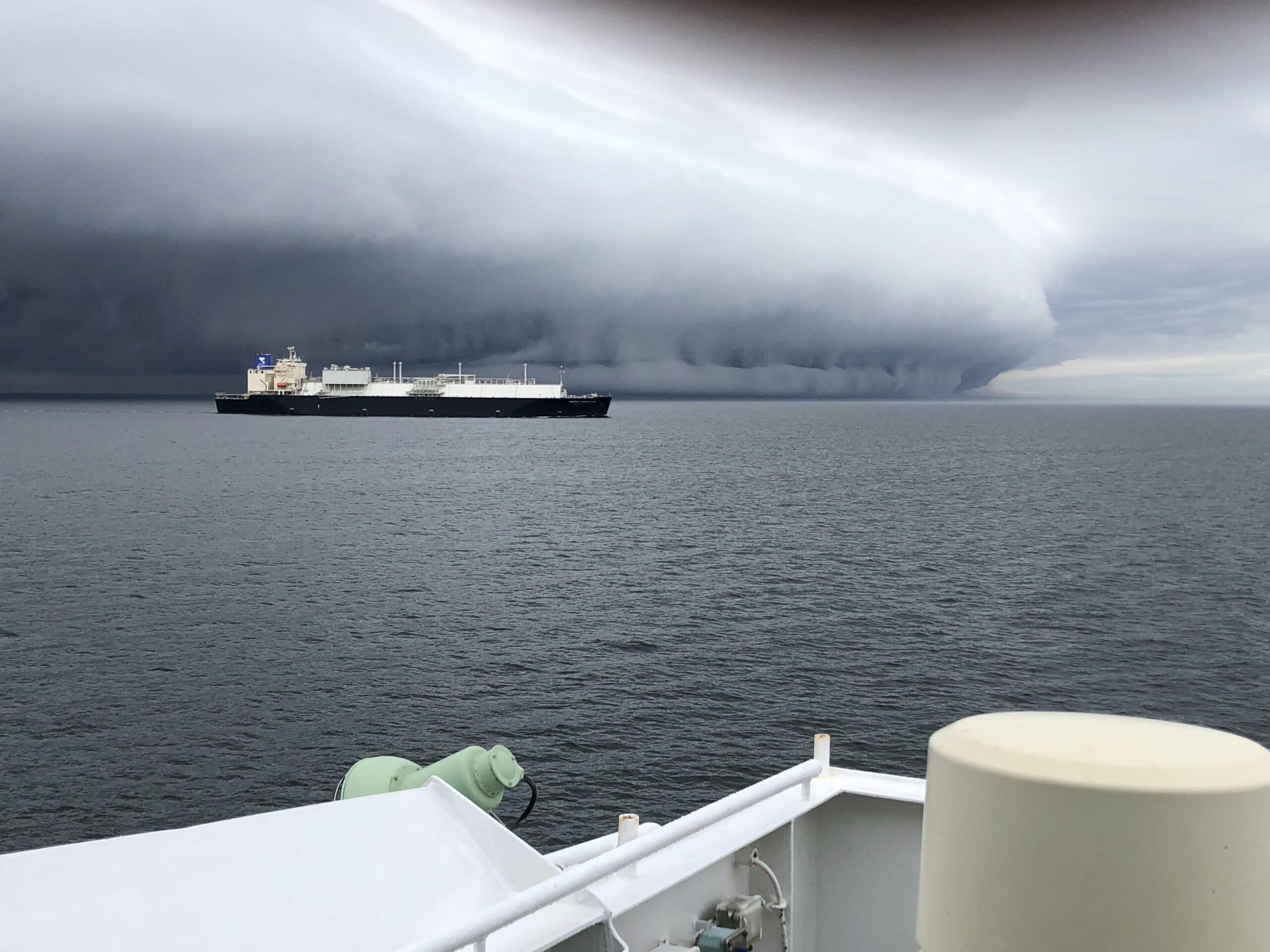
The continuity of this painting through more than a century speaks to the continued, shared experience of pilots and the challenges they face in service to, not only the maritime world, but to our society as a whole.
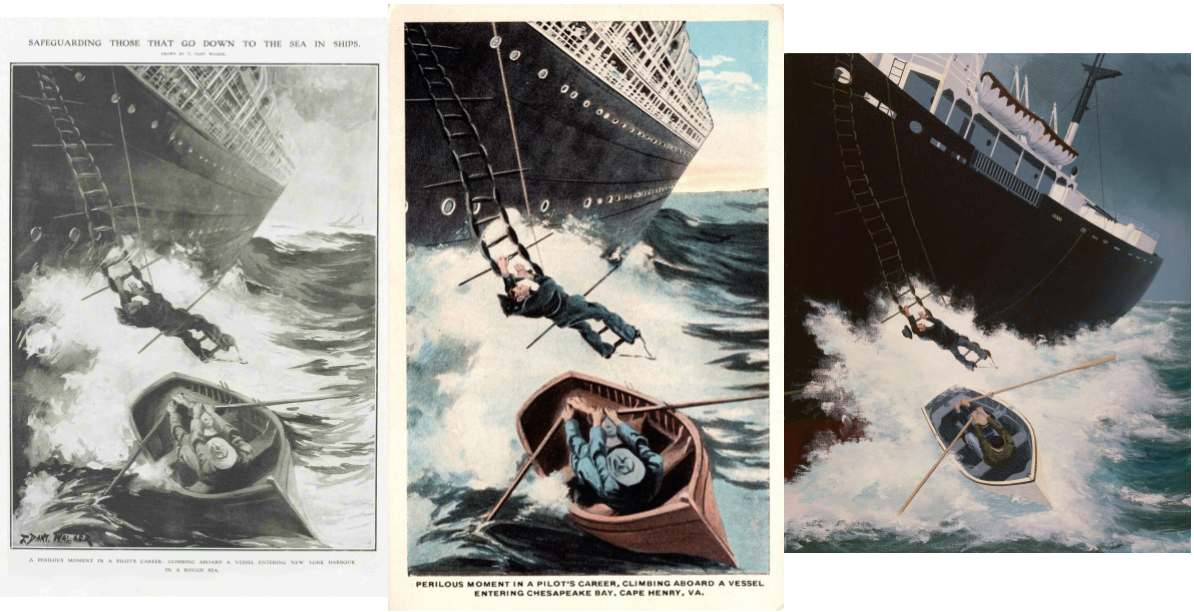
But beyond that, through his efforts in capturing and preserving the history of pilots through works like these, Captain Brian Hope continues to steward the legacy of Maryland pilots who are no longer here to share their stories. And now future generations can know the work of these few, and perhaps, they’ll find their own connection as a mariner. Maybe they’ll even decide that they, too, want to be a pilot.
A Note of Gratitude
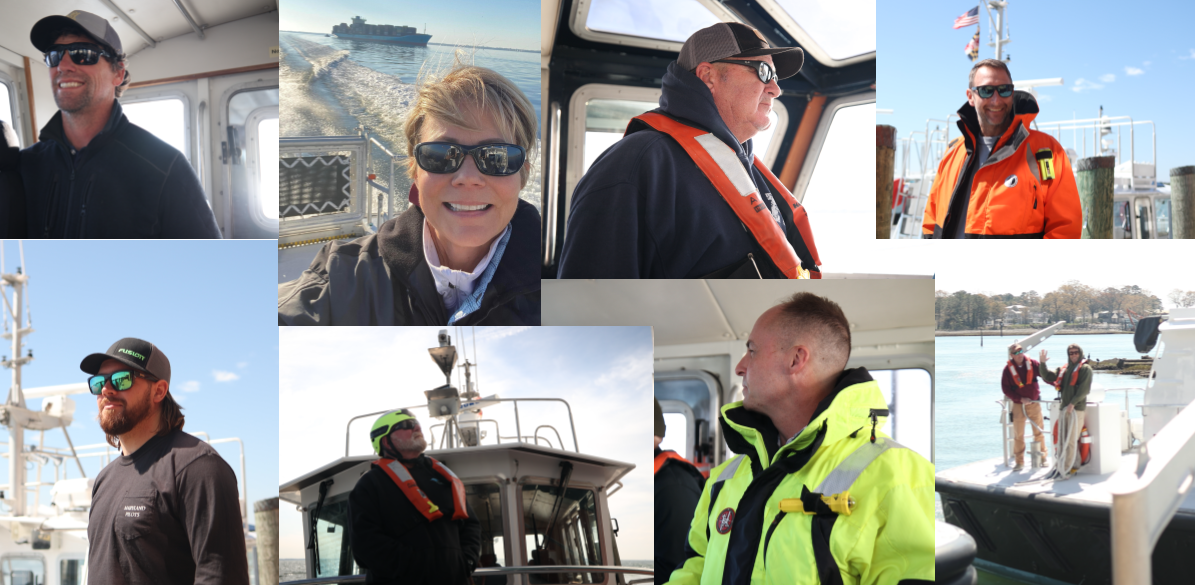
This episode has been on my “back burner” for a while now. I wanted to try to speak with Captain Hope and get his take on his work before diving in. Never did I know that through one episode, I would find myself connected with so many amazing people who were so willing to help me. From Captain Whiting Chisman, the President of the Association of Virginia Pilots and Captain Eric Nielsen, President of the Association of Maryland Pilots, to Station Manager Mike Hanna who coordinated our filmings with the pilots at Lynnhaven Station and all of the pilots and crew who welcomed us as we came to film – even letting us ride out to meet inbound and outbound ships. The experience you allowed us to capture and stories you shared of your own connections to the water as mariners will not soon be forgotten.
So to all of you – sincerely – thank you!